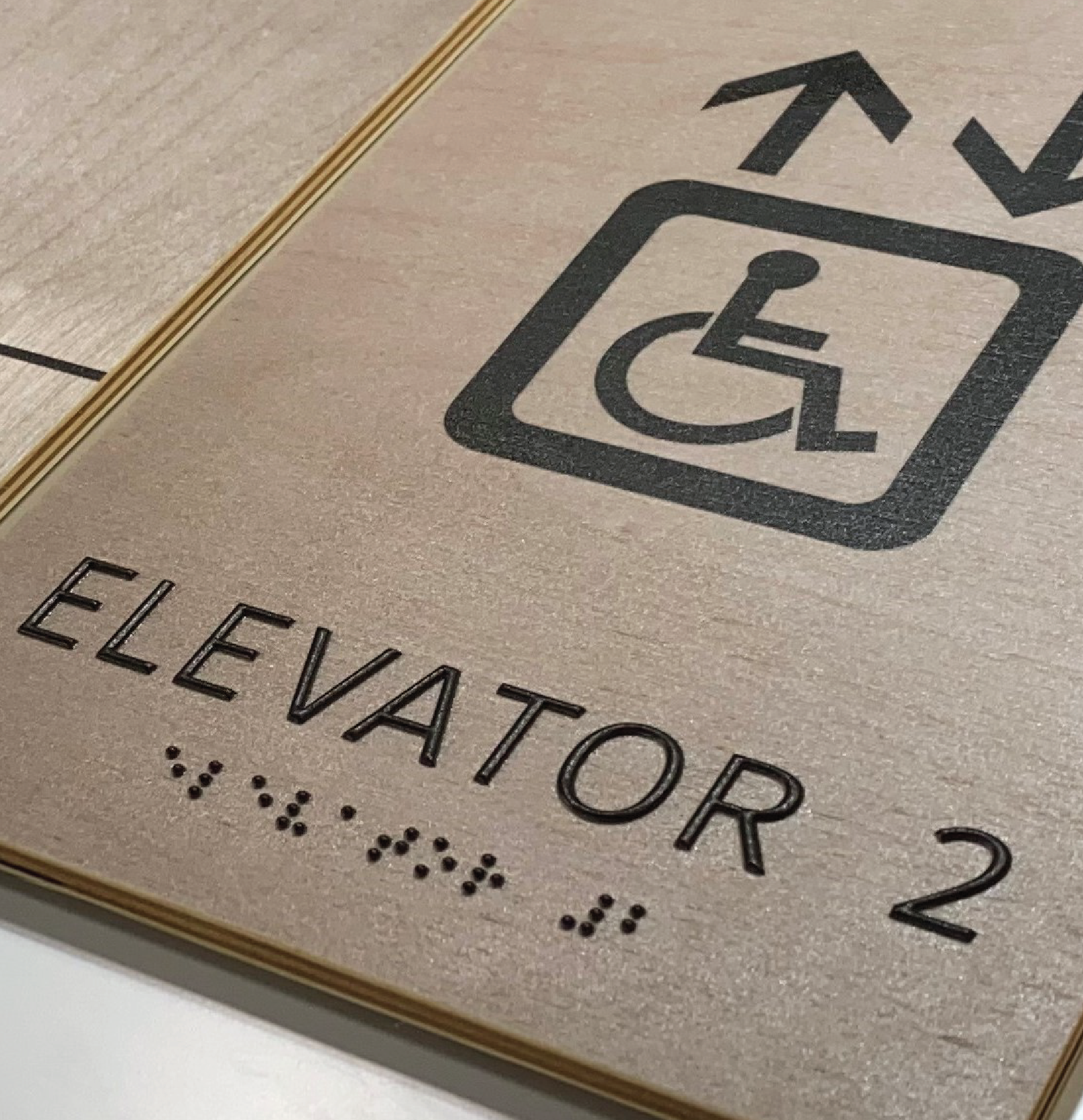Personalizing ADA Signs to Satisfy Your Particular Needs
Personalizing ADA Signs to Satisfy Your Particular Needs
Blog Article
Discovering the Secret Functions of ADA Indicators for Boosted Access
In the world of access, ADA indications work as quiet yet powerful allies, ensuring that areas are inclusive and accessible for people with disabilities. By incorporating Braille and responsive components, these indicators break obstacles for the aesthetically damaged, while high-contrast color design and clear fonts deal with varied visual demands. Moreover, their tactical placement is not approximate however instead a computed initiative to facilitate seamless navigating. Past these functions exists a deeper narrative regarding the advancement of inclusivity and the recurring dedication to developing equitable areas. What much more could these indicators signify in our quest of universal ease of access?
Value of ADA Conformity
Ensuring conformity with the Americans with Disabilities Act (ADA) is critical for fostering inclusivity and equal gain access to in public spaces and work environments. The ADA, established in 1990, mandates that all public centers, companies, and transportation services accommodate people with impairments, guaranteeing they appreciate the very same legal rights and possibilities as others. Conformity with ADA criteria not only fulfills legal obligations yet additionally boosts a company's reputation by showing its dedication to variety and inclusivity.
One of the key facets of ADA conformity is the implementation of available signs. ADA signs are designed to make sure that people with impairments can easily navigate through buildings and spaces.
In addition, sticking to ADA laws can alleviate the threat of legal repercussions and prospective penalties. Organizations that stop working to comply with ADA standards might encounter fines or lawsuits, which can be both destructive and economically burdensome to their public image. Thus, ADA compliance is indispensable to fostering an equitable environment for everybody.
Braille and Tactile Elements
The consolidation of Braille and responsive aspects right into ADA signs personifies the concepts of access and inclusivity. It is commonly placed below the matching text on signage to make certain that people can access the information without visual aid.
Tactile aspects expand past Braille and include elevated characters and symbols. These parts are designed to be discernible by touch, enabling individuals to determine room numbers, bathrooms, exits, and various other crucial locations. The ADA sets particular guidelines regarding the size, spacing, and positioning of these responsive elements to enhance readability and guarantee consistency across various settings.

High-Contrast Color Design
High-contrast shade systems play a crucial duty in improving the visibility and readability of ADA signs for individuals with aesthetic impairments. These plans are vital as they make the most of the difference in light reflectance in between message and history, making certain that indicators are easily noticeable, even from a distance. The Americans with Disabilities Act (ADA) mandates using specific color contrasts to fit those with limited vision, making it a critical facet of compliance.
The efficacy of high-contrast colors lies in their capability to stand out in various lighting problems, consisting of dimly lit environments and areas with glare. Generally, dark text on a light history or light text on a dark history is employed to attain optimal comparison. Black text on a yellow or white history offers a stark aesthetic distinction that aids in quick recognition and comprehension.

Legible Fonts and Text Dimension
When considering the style of ADA signage, the choice of clear fonts and proper text dimension can not be overemphasized. The Americans with Disabilities Act (ADA) mandates that typefaces need to be sans-serif and not italic, oblique, manuscript, extremely ornamental, or of unusual form.
According to ADA standards, the minimum text height should be 5/8 inch, and it needs to raise proportionally with visit this web-site seeing distance. Uniformity in text dimension adds to a cohesive aesthetic experience, aiding individuals in browsing atmospheres efficiently.
In addition, spacing in between lines and letters is integral to readability. Adequate spacing protects against characters from showing up crowded, improving readability. By sticking to these standards, developers can considerably boost ease of access, making certain that signs serves its desired function for all people, despite their visual capacities.
Effective Positioning Methods
Strategic positioning of ADA signage is necessary for maximizing availability and guaranteeing compliance with legal standards. ADA standards specify that signs need to be installed at an elevation in between 48 to 60 inches from the ground to guarantee they are within the line of view for both standing and seated individuals.
In addition, indicators need to be put surrounding to the latch side of doors to enable very easy identification before entry. Uniformity in indication positioning throughout a center enhances predictability, decreasing confusion and boosting overall user experience.

Verdict
ADA indicators play an essential duty in advertising ease of access by integrating features that address the needs of individuals with handicaps. Including Braille and responsive components makes certain important information comes to the aesthetically damaged, while high-contrast color pattern and clear sans-serif fonts boost visibility throughout numerous lighting conditions. Reliable placement methods, such as appropriate placing elevations and tactical locations, additionally promote navigation. These aspects collectively cultivate an inclusive environment, highlighting the relevance of ADA conformity in ensuring equal accessibility for all.
In the realm of ease of access, ADA indications serve as quiet yet powerful allies, guaranteeing that rooms are accessible and comprehensive for people with disabilities. The ADA, established in 1990, mandates that all public centers, companies, and transportation services accommodate people with specials needs, guaranteeing they enjoy the same rights and opportunities as others. ADA Signs. ADA indicators are designed to make certain that people with specials needs can quickly navigate with their website areas and buildings. ADA standards stipulate that indicators must be installed at a height between 48 to 60 inches from the ground to guarantee they are within the line of sight for both standing and seated individuals.ADA indications play a crucial role in promoting access by integrating functions that resolve the requirements of people with impairments
Report this page